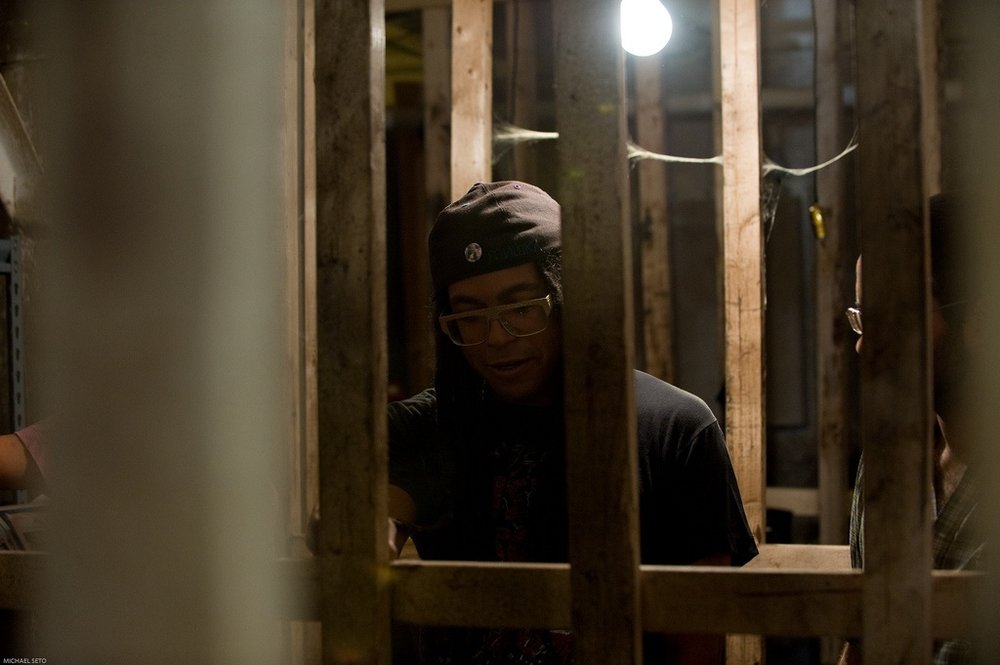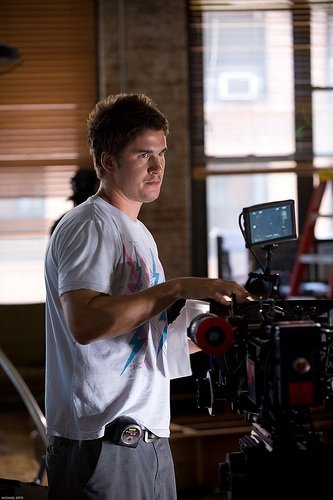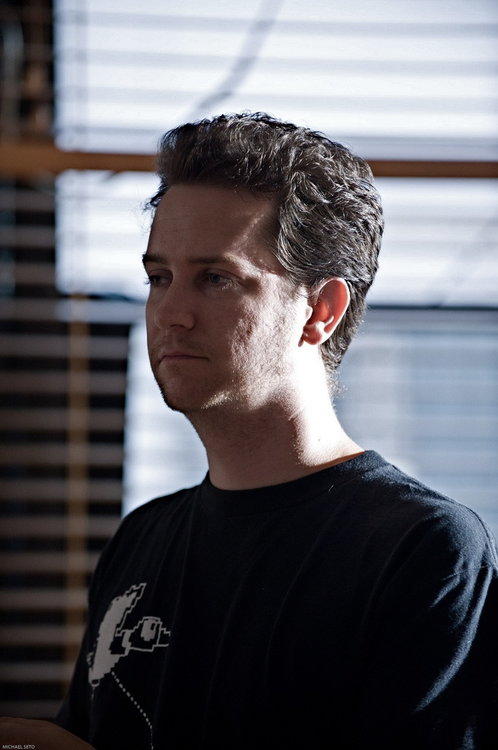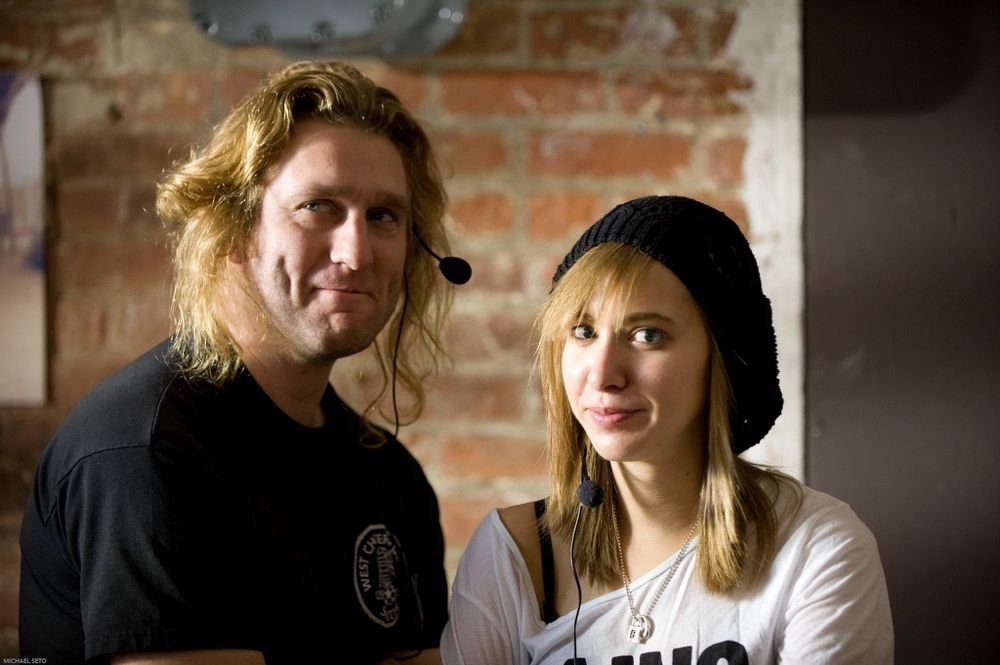-
Posts
478 -
Joined
-
Last visited
Everything posted by Frank Barrera
-
No no not too bad at all. www.gripandelectric.com is owned by a friend (and colleague) of mine Mr. John Frisbie out of NYC. He's an excellent gaffer and a hell of a dude. f
-
really? is this what you meant to say? "as flatly as you can"? this is misleading. if someone was to just light a scene flat that was meant to be low key they would not be able to magically create a high contrast look in post. especially in a lousy format like mini dv or hdv. you need to light your scene exactly as you wish it to appear and then yes add some fill light so that you can control some contrast and crush the black levels if desired in post. but lighting flat will only render a flat image.
-

Cinematographer needed for 16mm film
Frank Barrera replied to Yiannis Antonas's topic in Jobs, Resumes, and Reels
And this sub forum is for discussions about specific cinematographers. there is an entire other sub forum just for JOBS. good luck -

ok ok how do you post more pix
Frank Barrera replied to Frank Barrera's topic in In Production / Behind the Scenes
I figured it out. you have to become a Sustaining Member. then you get 2MB per post. f -

As Good As Dead wraps
Frank Barrera replied to Frank Barrera's topic in In Production / Behind the Scenes
some more pix. these are all from a Nikon D700. as i sorted through our still photographer's excellent work i realized how i simply didn't prepare for detailing our lighting set ups at all. what follows is a series of photos with impromptu stand ins and random crew. next time i will go in with a plan for this process because i do think it can be useful to others as well as myself. Over all we used HMI's most of the time and kept the camera at it's native daylight color balance. 1.2K HMI PARS were the work horses. a couple of 575s and occasionally a 4K PAR. lots of hard back keys with fill light usually provided by a hard skip into a 2'X3' white card covered with J-Lar tape placed on the floor very close to the subject. this is a basement storage locker set that we keyed with a single 200 watt day light practical. the RED handled the bare bulb quite nicely. there were two baby 1K back edges and a 1.2K HMI PAR with Full CTB bounced into the white ceiling for camera side fill. this was a day time noir film. and that was a challenge as we did not have the budget for big units outside of the windows pumping shafts of daylight into the main location. approx 60 pages takes place in one large loft during the daytime. one of the looks we came up with was the classic venetian blinds break up. here our 1st AC Jay Cleary just happened to be standing in a very typical lighting set up: soft light coming from below; no fill light and a rim light motivated by the practical windows. for the darker content we would simply back light the characters and only add a small eye light when appropriate. here the neck is blown out but that is not how we exposed it on the day. -
max, in the october 2006 issue of AC Ballhaus talks about how Scorsese wanted him to take inspiration from the original Hong Kong film Infernal Affairs from which The Departed is based upon. You can read it yourself but basically he says that "Marty was pushing me to try something different. I tried to do that, but after a couple of days on the shoot I realized that although the (dark and mysteriously lit) styles of those movies were great for the particular stories they were telling, we were doing an American movie with American stars... I couldn't go that far with this movie."
-

As Good As Dead wraps
Frank Barrera replied to Frank Barrera's topic in In Production / Behind the Scenes
Well, it was taken with a Nikon D700, which is a digital camera. That having been said this feature film was shot with the RED HD camera system which is also digital. -
can't figure out how to post more than 100K in one post. help please. thanks f
-

As Good As Dead wraps
Frank Barrera replied to Frank Barrera's topic in In Production / Behind the Scenes
Finally got some pix. these are all crew members standing in. this shot is for a Close up of Andi MacDowell. -
Try using a Rosco fog machine. That should work.
-
really not sure how to respond to your post. um, yes step printing is in reference to a process involving an optical printer. obviously there is no need for an optical printer when shooting HD. there is a way to emulate that effect however. this is why i put "step printing" in quotes and called it an effect. you can also emulate this effect without an optical printer when shooting film. you shoot at a certain frame rate (ie: 6fps) then transfer it at that same frame rate to video. i call it "poor man's step printing". looks very nice. as for being called "video people", i guess you got me there. i shoot a hell of a lot of video. sometimes i shoot film too. but by far i shoot a hell of a lot of video. btw what's a "hiccup effect" anyway?
-

As Good As Dead wraps
Frank Barrera replied to Frank Barrera's topic in In Production / Behind the Scenes
whoops- i forgot that Jay Hillman also came out for one day to operate. thanks jay. f -

As Good As Dead wraps
Frank Barrera replied to Frank Barrera's topic in In Production / Behind the Scenes
i'm trying to get photos from the stills photographer that might depict some of our lighting set ups but i can't use anything with the actors in it and we didn't have proper stand ins so we'll see what i get that's post worthy. as for the latitude i don't have a concrete answer. the decision to go RED was very last minute giving us zero time for any proper tests. all i can say is that almost every shot had something almost blown out, something blown out and something almost black. there seemed to be a decent range above and below our exposure to play with. i was very happy with the results we were getting. we definitely pushed the signal to the higher and lower edges as we were making a noir piece. -
We just wrapped AS GOOD AS DEAD starring Cary Elwes, and Andi MacDowell; directed by Jonathan Mossek. We used two REDs out of OffHollywood New York. Despite the talent named we were on an almost impossible budget. Mark at OffHollywood really helped us out. Camera support and lenses came from CSC NY. The budget was reflected in our choice of lenses: Cooke S2/3 17MM, 25MM, 32MM, 50MM, 75MM, and 100MM. We day played the Cooke 20MM-100MM and the Angenieux HR 25MM-250MM. And for a few exterior days we had the Cooke S4 150MM (beautiful glass that is). Some steadicam by Phil Martinez. And a Fisher 11. All in all it was just a regular shoot despite this camera body that few of us understood at first. First some negatives: Although the view finder image is bright with decent contrast and over scan view, the buttons are too easy to accidentally press. They need to move these buttons around front where no one's fingers would ever be just like with every other professional HD camera view finder. I do like the B&W peaking function. We were at a 2.8 often so depth of field was usually very shallow. We had the 8 GB cards which just aren't big enough for long narrative takes with actors improvising. We rolled out too many times. The 16 GB card will easily correct this. We would sometimes go to drives when we knew it would be a longer take but never more than 20 minutes so that we could keep up with media verification and management. Hey it's still a video camera so clipping into over exposure is still an issue. Shooting at a shallow depth of field helps a lot as out of focus clipping looked ok. The rest is positive: I found that while shooting RED RAW I could somewhat accurately use my light meter which was a great help for me and our Gaffer. We concentrated on and were very specific about our ratios. Having to run back and forth between the monitors and the set was not necessary. That's something I do not enjoy when using a Varicam or F900 etc. Using a light meter while making a movie is fun. Over all our experience with Build 16 was excellent. We had a few dropped frames on one day out of 18 and our awesome Red Tech, Keith Putnam caught it within minutes so we were able to re-shoot that one shot. Other than than it was very smooth. The hot swappable battery cable was great. We never had to power down. Basically we ran this like a 35MM shoot. And that's a good way to run. We did shoot a small test and pushed it around on Scratch so I know what's possible with this camera. We monitored 720p on LCDs (couldn't afford CRT) and that looked very good to me on set so I am optimistic about the intended 35MM blow up. I've seen some tests at Duart NY and that looked very good as well. I am very familiar with the intense debate around Red's use of the Bayer chip technology but in the end, on a tight budget. if we must shoot HD and the D21, the F35 and the Genesis are off the table, I would easily choose the RED over the Varicam, P2 or F900 if not simply because I can use 35MM lenses hovering around a 300ASA exposure index. Every job has different needs and requirements. For us Red was perfect. And none of it would have been possible without our excellent camera department. Operators Joe Foley, Learan Kahanov, Eric Giovon and Jae Song; 1st AC's Jay Cleary and Chris Hamilton, 2nd AC Maria Juranic, Camera Interns Loui LeRoy and Katharina Bosch. My deepest appreciation to you all. f
-
thanks for the response. what we wound up doing was shooting two cameras side by side for a lot of action (gun fight). one camera was 24fps (to cover our selves) and the other was 6 fps and sometimes 12 fps. we ingesting the off speed material into FCP and time stretched it by about 24% and it worked beautifully. the final effect will have to be done in post.
-
crazy. want to do step printing effect tomorrow morning with out a test. we are on build 16 and have been shooting feature for three weeks now.(full report to follow when I come up for air). question is can we shoot 6 fps and play back at 6 fps? the desired effect is step printing. or what i call "poor man's step printing" where you shoot film at 6 fps and transfer at 6fps and you get a nice smear to all action. like Doyle's early work with Wong Kar Wai i'm thinking this would be straight forward in post to make it happen if we capture at 6 fps but would like to show the director something on set. any thoughts would be most welcomed. thanks in advance f
-
A fairly standard "No light" light is a bounce board (usually white side bead board 4X4 or 4X8) directly over camera with a 2K Mighty w/ full (or double) CTB and on a dimmer to dial it in just right. Naturally with video you need a bit more signal than you may think. the bounce will give you that eye light twinkle. an unmotivated edge or slash on a wall is not a bad idea so the image has some contrast. a "dark room" looks gd on paper but not do much on tv.
-
Thanks guys. I will shoot the Macbeth chart at the check out and periodically throughout the shoot as we change major lighting set ups. i will report back if anything interesting happens. f
-
Hi all. I'm in prep for a feature and the idea is to run with two Reds. Mostly we will be shooting them stacked side by side getting double coverage ie: Wide and Tight. My main question is is there a need to "match" these cameras? or is "RAW" just "RAW" and you match them in post? I'm sitting down with the Post Sup tonight but would like some input from other shooters who have handled multi cam RED material. thanks much f
-
for that price range i would go with this: http://www.bhphotovideo.com/c/product/5632...DCAM_EX_HD.html but then you wouldn't have any money left for sticks. you could go for the EX1 and save around $2K that would go towards sticks and other accessories.
-
aside from all the technical information provided above don't forget that the main thing that makes the look of an 80's slasher film is the hair. those ladies had some real nice hair doos. the hair spray must have been part of the art department budget on these films.
-
the best approach to a project shooting in reversal is to shoot some bracketed exposure tests. you would do the same if shooting reversal still film so why not do it as a test for motion picture?
-
UPDATE: Just got off the phone with my father-in-law and he confirms that Hal's use of the word "surfactant" is of course correct. He says ALL detergents are considered surfactants regardless of their application.
-
I have used and seen used a window cleaner like Windex to not just clean the glass prior to gel application but then also as a wetting agent to allow the gel to adhere to the window. Hal, is "surfactant" technically the correct word? I thought surfactants involved liquid surfaces such as the lungs and the subsequent chemical reactions. When we use liquid for polyester gel application it's only a physical reaction and not a chemical one. I should ask my father-in-law because he actually works with lung surfactants in the case of premature babies. DOnt mean to hijack the thread. just curious.







